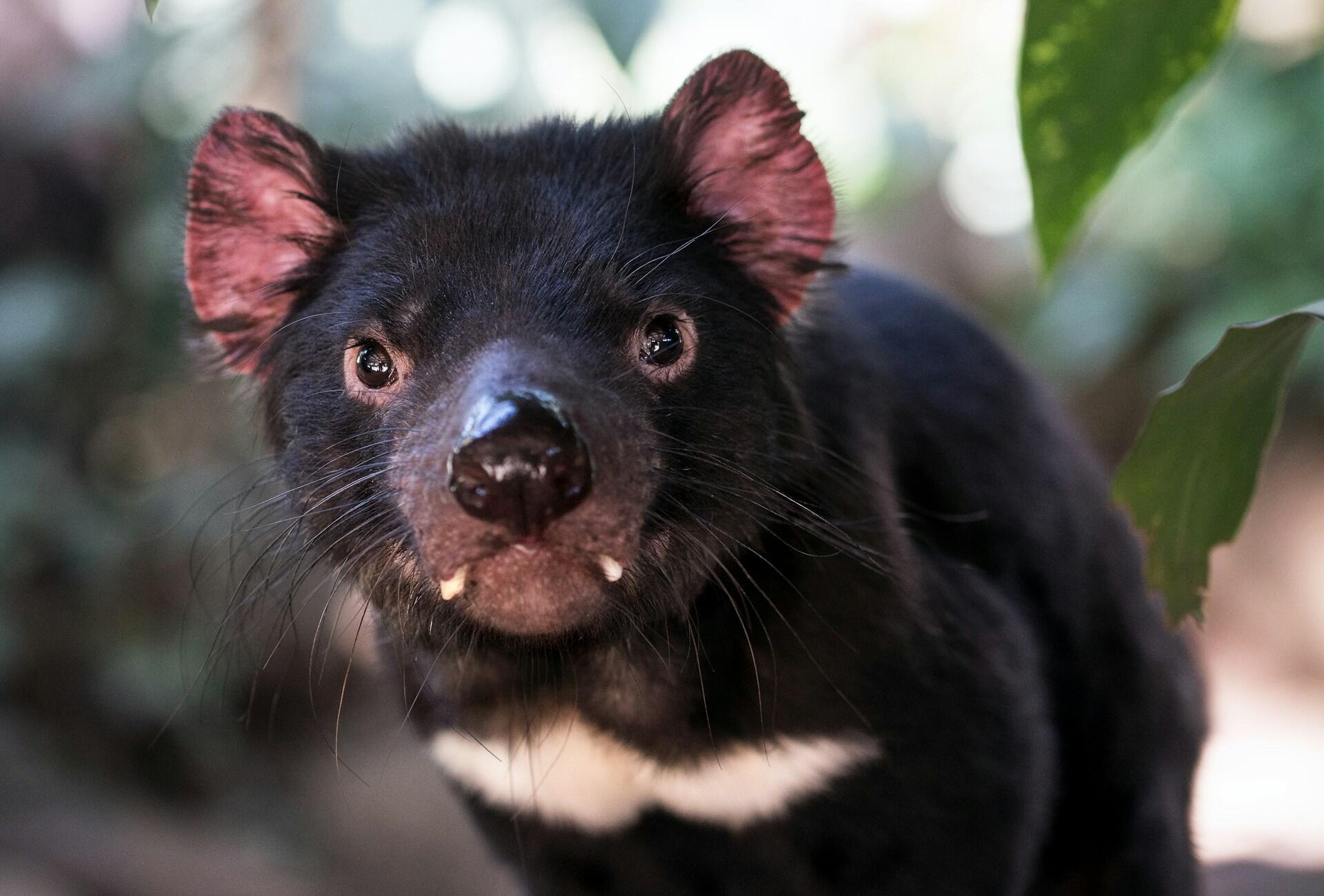This Australian state is rich with unique flora and fauna. Some of its animals are found in other parts of Australia, but more than 15 species exist only in Tasmania. This article features 10 unique creatures populating Tasmanian wildlife.
| 😻 Animal | 📛 Binomial name | 📍 Only in Tasmania? | 🔍 Characteristics |
|---|---|---|---|
| Tasmanian Devil | Sarcophilus harrisii | Yes | Small size Fierce bite Short lifespan |
| Yellow wattlebird | Anthochaera paradoxa | Yes | Largest of the species Yellow patch on its breast Relatively short beak |
| Eastern quoll | Dasyurus viverrinus | Yes (though they're being rehomed in other Australian states) | Small, about the size of a cat Dark fur with white spots Solitary animals |
| Tasmanian pademelon | Thylogale billardierii | Yes | Small head Bushy fur Large population |
| Tasmanian Native Hen | Tribonyx mortierii | Yes | Strong legs A white patch on their flanks Doesn't fly |
| Australian brown fur seal | Arctocephalus doriferus | Yes | Large Sturdy Partially covered with brown fur |
| Platypus | Ornithorhynchus anatinus | No | Duck billed otter's body beaver's tail |
| Eastern grey kangaroo (forester kangaroo) | Macropus giganteus tasmaniensis | Yes | Tasmania's biggest marsupial Greyish fur Live in small groups |
| Common Ringtail Possum | Pseudocheirus peregrinus | No | Reddish coat prehensile tail 1/4 tail is white fur |
| Tammar Wallaby | Notamacropus eugenii | No | Small size Grey coat Small heads |

The Devil: King of Tasmanian Marsupials
The Tasmanian devil is the largest remaining carnivorous marsupial. Its stout neck and strong jaw give it the most powerful bite (relative to body size) among carnivorous mammals. To wit, when it feeds, it crushes and eats bone as well as flesh.
The Tasmanian devil is this state's official animal symbol.
Tasmanian devils have a relatively short lifespan, typically only five years. Their existence is made more precarious, in part due to human activity. For example, road traffic impacts devil populations. These nocturnal animals are hard for drivers to see as they feed on roadkill.
The explosion of devils' facial tumours is the latest worry for conservationists, and keep wildlife biologists busy. The conservation project Save the Tasmanian Devil Program resumed its animals sharing program with zoos around the world. This effort takes the devils out of potentially toxic environments.
The Yellow Wattlebird
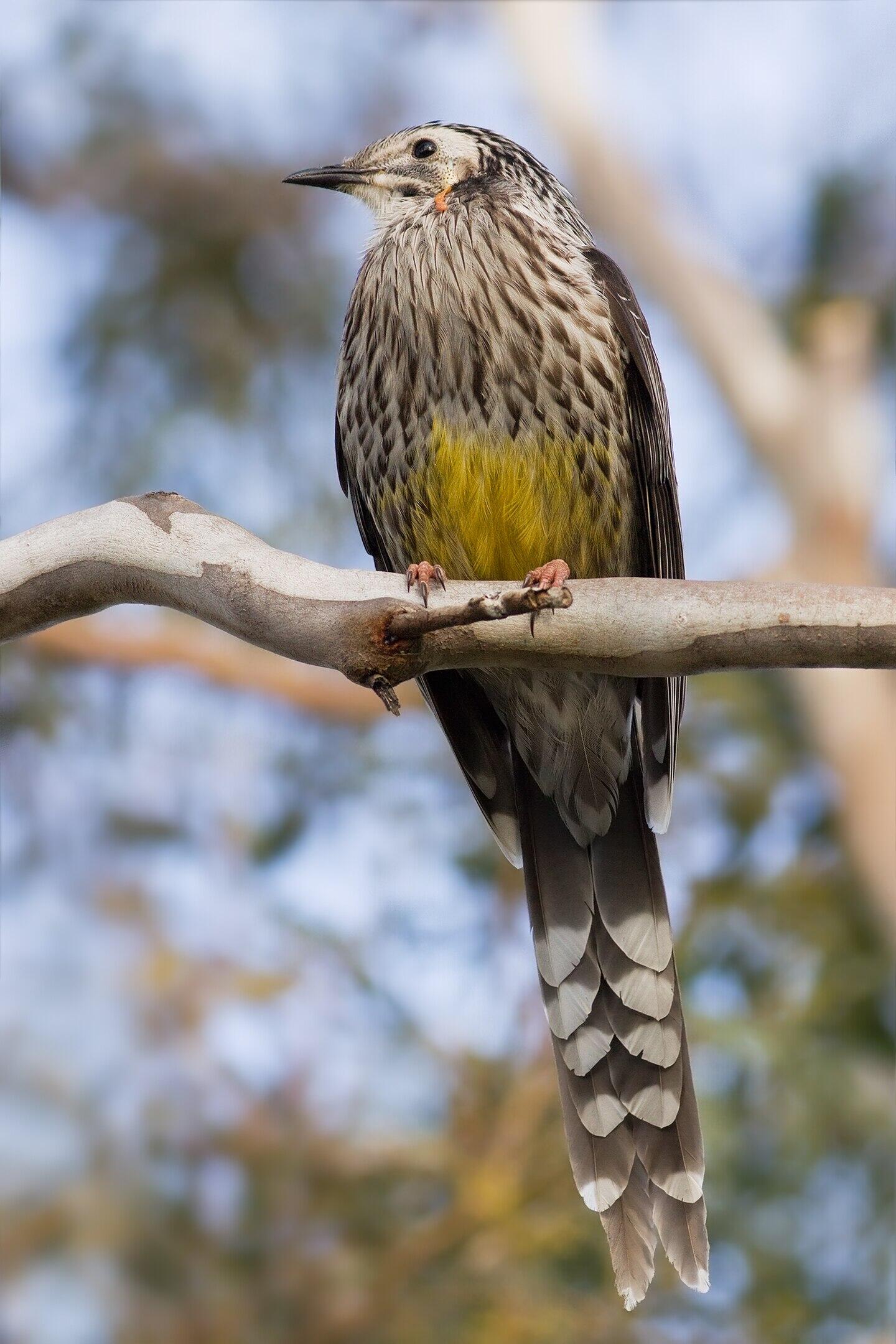
The yellow wattlebird is Tasmania's unofficial state animal. It belongs to the family Meliphagidae, the honeyeater family. We also call it the Tasmanian wattlebird, or the long wattlebird.
This is the largest of the world's honeyeaters, and lives only in Tasmania. We find them concentrated in the central and eastern areas, though they're comfortable in all habitats.
They're rather bold and adventurous, with strong, acrobatic flight activity. They think nothing of people, and will often search for food in human settlements.
These birds are omnivorous. They dine on bees and spiders as lustily as on nectar and manna (plant sap that's been crystallised). They are aggressive in defending their territory, and mating pairs share nesting and parenting duties.
Tasmanian Quoll
This medium-sized carnivorous marsupial, also called the eastern quoll, is one of six still-living quoll species. This formerly-named eastern native cat went extinct across Australia in the early 1960s. Today, Tasmania is the only place to see them in the wild, if you can spot them. They mostly live in remote areas, in grasslands, fields, and forests.
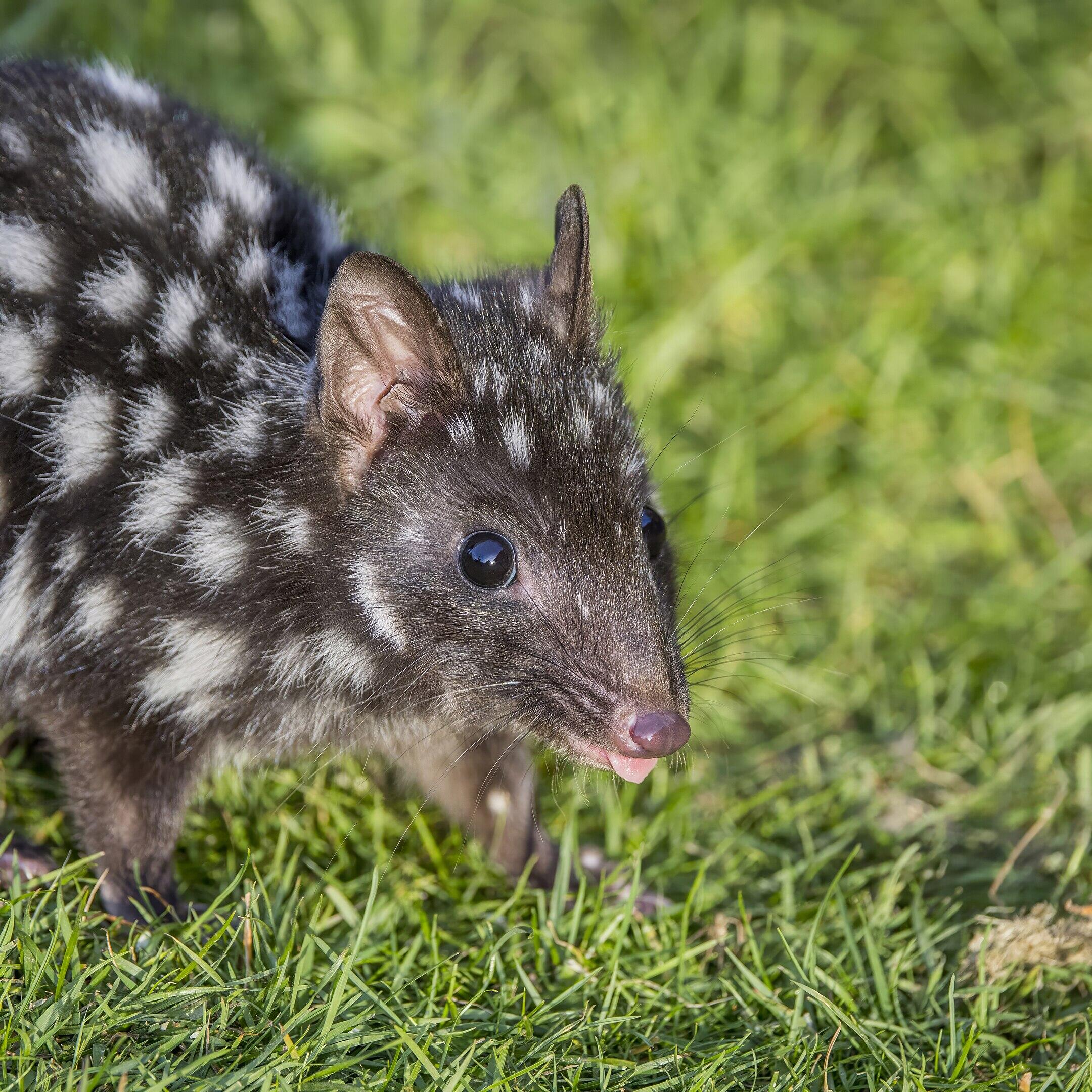
In the family of Dasyuridae (marsupials), these cat-like creatures exhibit what we think of as typical cat behaviour. They're solitary animals, to the point that they mostly avoid each other outside of mating season. They're voracious meat eaters, sometimes daring to take food from Tasmanian devils.
Conservationists reintroduced the eastern quoll in Victoria (2003) and the Australian Capital Territory (2016). Their small size mandates shelter behind fox-proof fencing.
Tasmanian Pademelon
Other pademelon species thrive on the mainland. These small marsupials used to live among the animal populations in Victoria and South Australia, but were eradicated in the 1800s.
These red-bellied pademelons have bushier, heavier fur than their northern cousins. Their bodies are compact, with smallish heads and relatively big, rounded ears.
These marsupials lack the hip and facial markings other pademelons have.
Like many marsupials, these animals are herbivores. They are prey to more aggressive hunters, from dogs and cats, to eagles and devils. So, they hide in their burrows, coming out at night to feed and mate. Despite being prey to all, this species boasts a large population, sometimes mandating culling.

The Tasmanian Native Hen
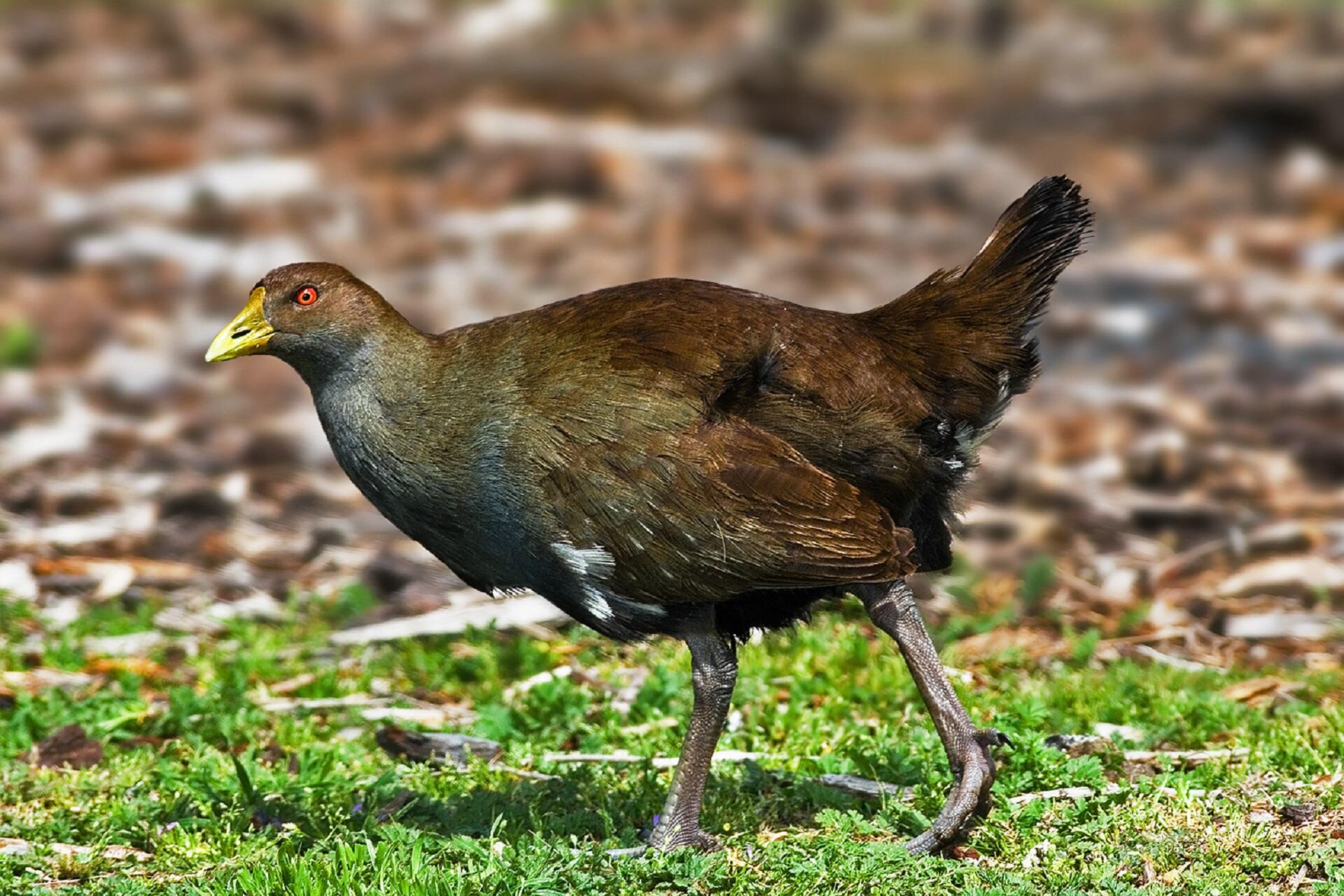
Of all the animals that are native to Australia, flightless birds must be the most remarkable. Besides our country, some species of birds that can't fly exist in New Zealand, Guam, and the Galapagos.
These islands lack predators to threaten these birds.
They lost their flying ability because they had no need to take the high ground for survival.
This hen is a rather large bird, with olive-brown plumage, with a distinctive white patch on their flanks. Living on the ground, its legs are more sturdy and powerful than flying birds'.
It makes its home across Tasmania, save for the west and southwest regions. These hens like grassy areas, with easy access to water.
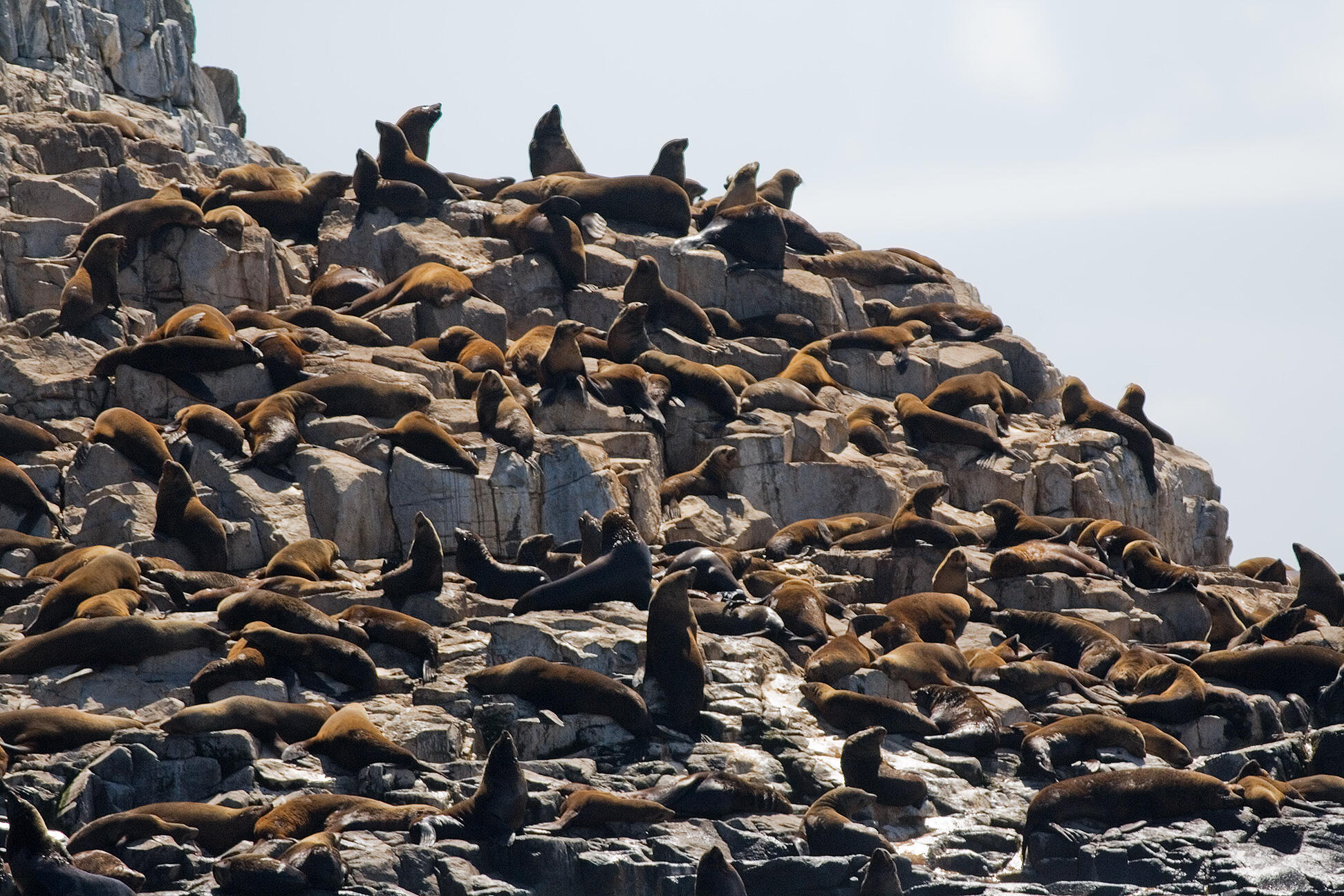
Seals
Around the world, land and sea are home to 35 seal species. At one time, four seal species used Tasmanian waters as their breeding grounds. Today, only one of those species exists: the Australian fur seal, also called the brown fur seal.
It belongs to the genus arctocephalus, the largest, and sturdiest of all the fur seals. We also find them around Africa's Cape of Good Hope, and all along South Africa's east and west coasts. However, we find differences between the African and Australian species:
African brown fur seal
- Arctocephalus pusillus
- males' weight: 200–300 kg
- males' length: 2.3 metres
- dive range: 204 metres
- eats: fish, squid, crab
Australian brown fur seal
- Arctocephalus doriferus
- males' weight: 190–280 kg
- males' length: 2.0–2.2 metres
- dive range: 120 metres
- eats: fish, squid, octopus
The Australian brown fur seal is among the wildlife populations of New South Wales, and up the South Australian coast. However, it breeds in Tasmania's Bass Strait, exclusively.
You can see the seals at/on Bruny Island, King Island, Maatsuyker Island group, Bass Strait islands, Maria Island, and the Freycinet Peninsula.
Platypus
This carnivore must eat 20% of its body weight each day. Platypuses spend most of their waking time hunting for food, in and out of water. It dives for shrimp and yabby, or digging for them with their snout. It also eats insect larvae and worms.

The platypus, which has many names in Aboriginal languages, embodies contradiction. It is:
- a mammal that lays eggs
- one of the two mammals that can detect electrical activity
- one of a handful of mammals with webbed feet
- the only mammal with a duck bill
- on the short list of venomous mammals (only the males are venomous)
This is one of the Tasmanian animals the mainland shares. The platypus makes its home along Australia's east coast, all the way to Queensland. This creature is among the unique animals in Australia— and, indeed, the world.
Are There Kangaroos in Tasmania?
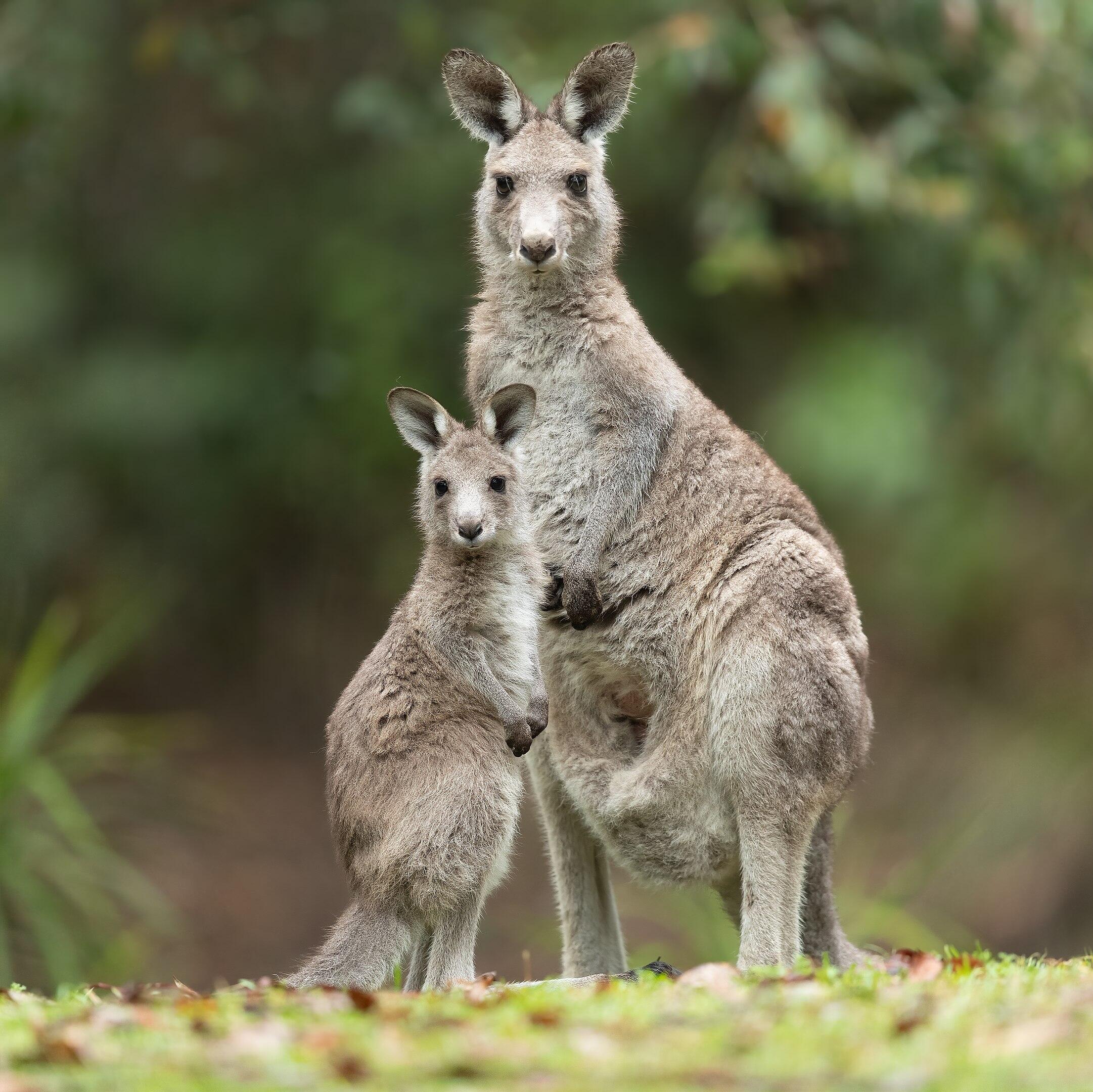
The kangaroo is one of Australia's two animal symbols (the emu is the other one). This implies that roos are everywhere, including in the detached state of Tasmania. However, the Australian coat of arms features a red kangaroo, which does not have a home in this state.
Keen kangaroo watchers may spot eastern grey kangaroo groups hopping across east Tasmanian grasslands and coastal areas. This species, inappropriately named Macropus giganteus, was the first of this marsupial group to be identified (in 1770).
This kangaroo's binomial name represents two subspecies.
The Macropus giganteus giganteus lives along the eastern third of mainland Australia.
The Macropus giganteus tasmaniensis is exclusive to Tasmania.
The Tasmanian roo, also called 'forester kangaroo', is Tasmania's largest marsupial, and the second-largest in the world. It eats grass all day, but your best chance to see them is at dawn or dusk. Improve your prospects of sighting them at Narawntapu, Maria Island, and Mount William National Parks.
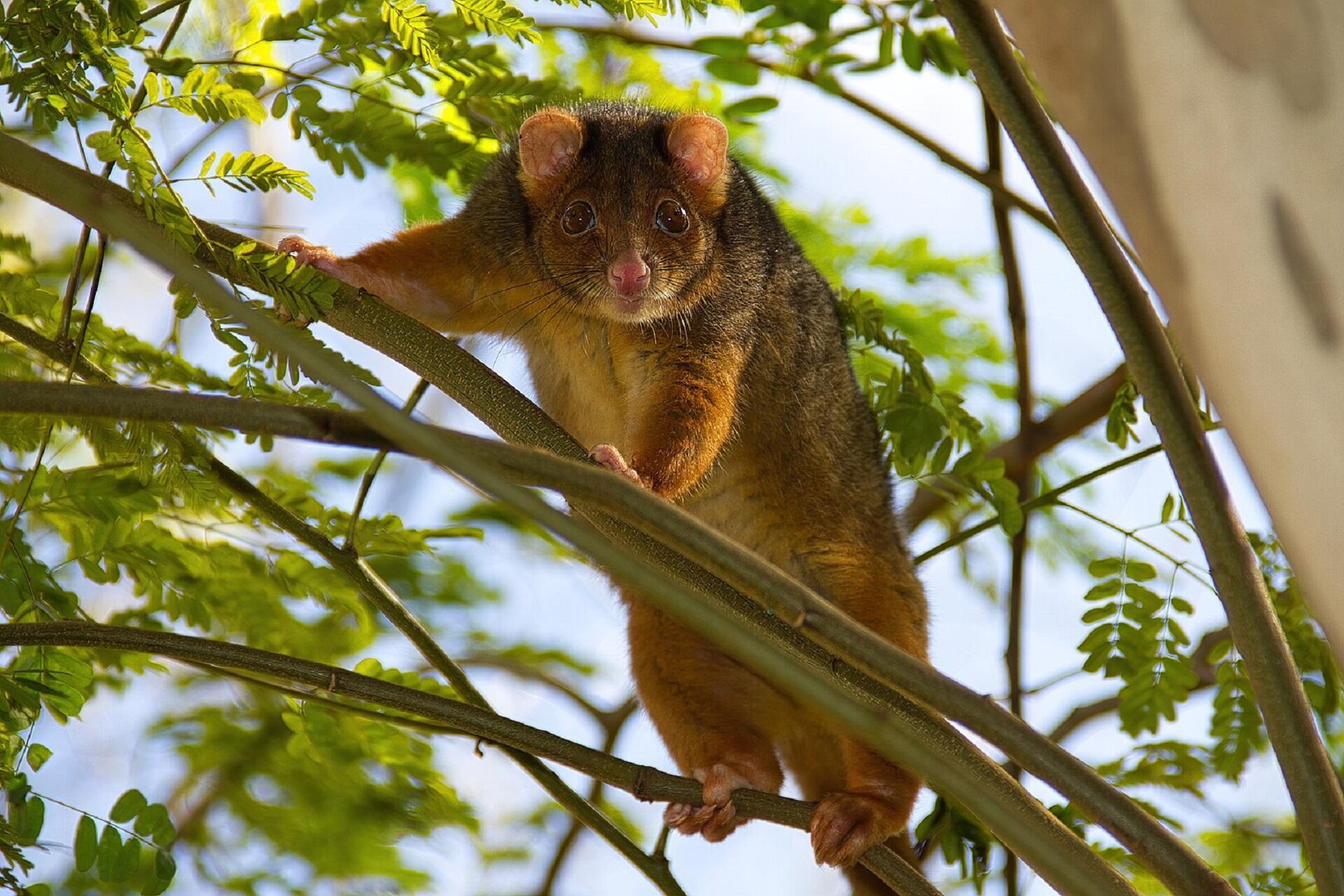
Common Ringtail Possum
Among the animals found in Tasmania, this adaptable ringtail possum fits right in. We find these small marsupials in South Australia, along Australia's eastern coast areas, and all over Tasmania.
Known as Pseudocheirus peregrinus in scientific circles, it's called 'fake hands' (pseudocheirus) thanks to its unusual paw structure.
They've adapted to living in trees, with their 'fake' hands and sharp claws able to dig into bark and grip small branches. Their long tails, 25% of which is covered in white fur, can grip tree limbs, giving them more stability when aloft.
This possum expels contents of its caecal sac (a pouch at the start of the large intestine).
It eats these caecotropes (poo pellets), to boost its protein intake.
These herbivores feed mainly off plants in the myrtle family. They might snack on cypress pine leaves, and occasionally on resins or plant gum. Eating nutrient-rich caecotropes keeps their metabolism in balance.
The Tammar Wallaby
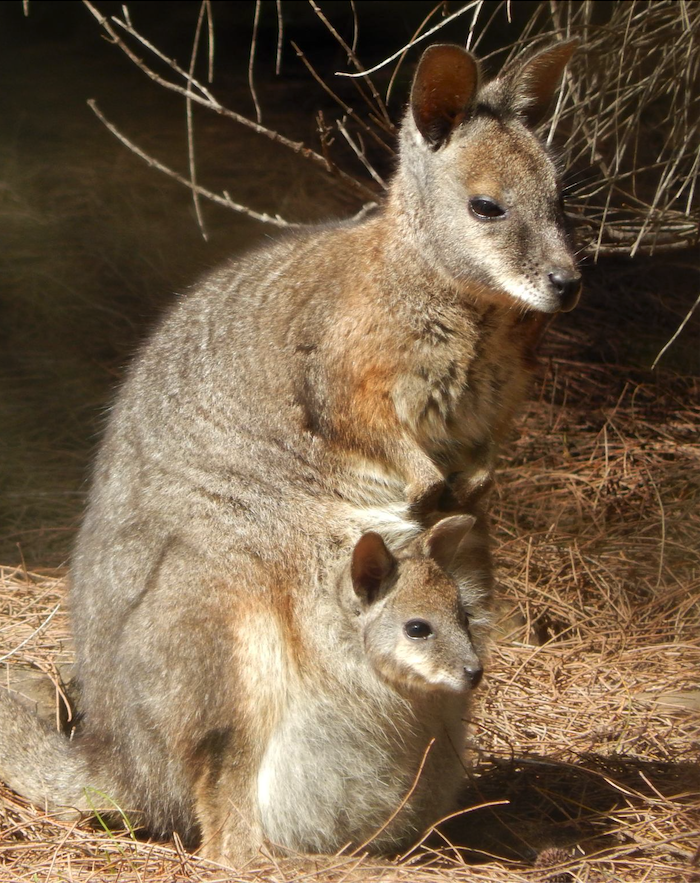
This small marsupial ranks among the cutest Tasmanian animals, though they don't live on the island proper. They are the smallest of the wallabies, standing just 45cm tall. The tammars that live on the islands around Tasmania tend to have greyer coats and narrower heads than those living elsewhere.
We find these animals in Western Australia, as well as South Australia and across the Tasmanian islands. It's a strange distribution, that's mostly due to settlers trying to rid the land of the species.
For your chance to see tammar wallabies close-up, cross over to Flinders Island, or head to Bonorong Park Wildlife Centre. You'll have to go at night, though, as these animals are daytime sleepers.

